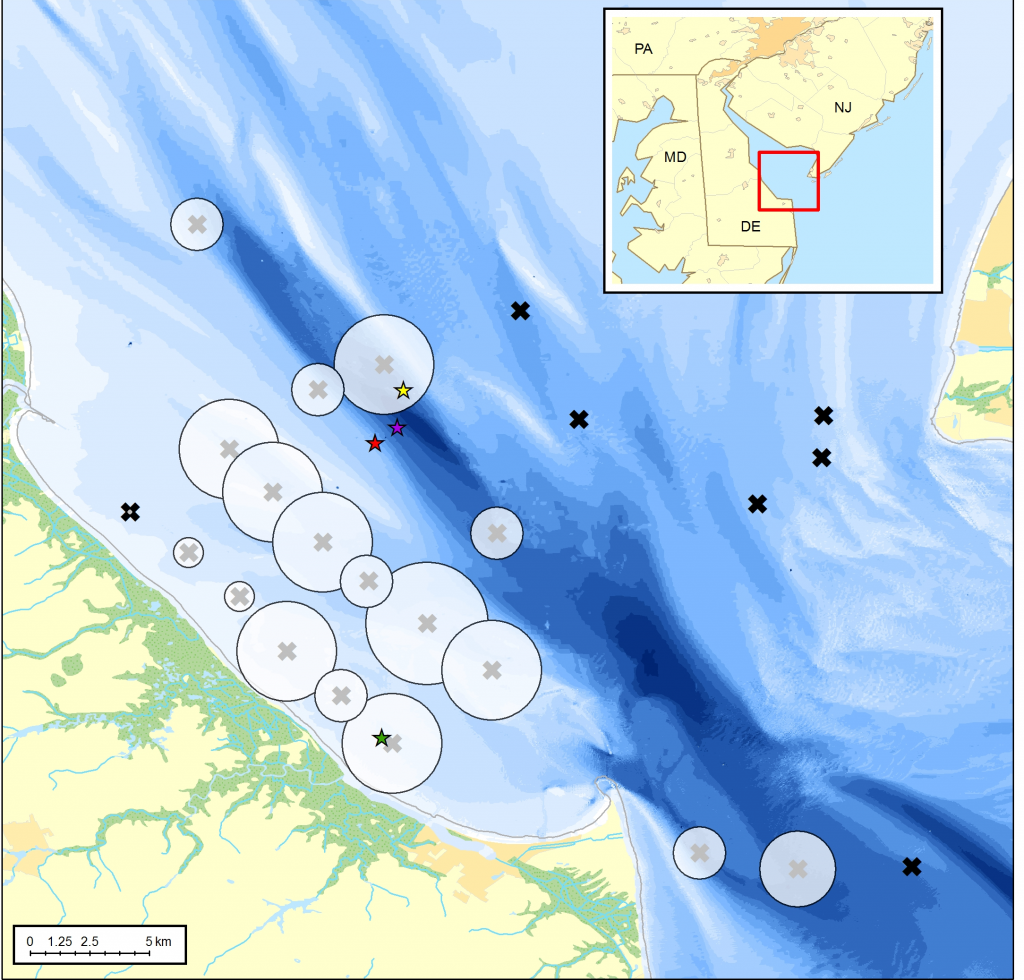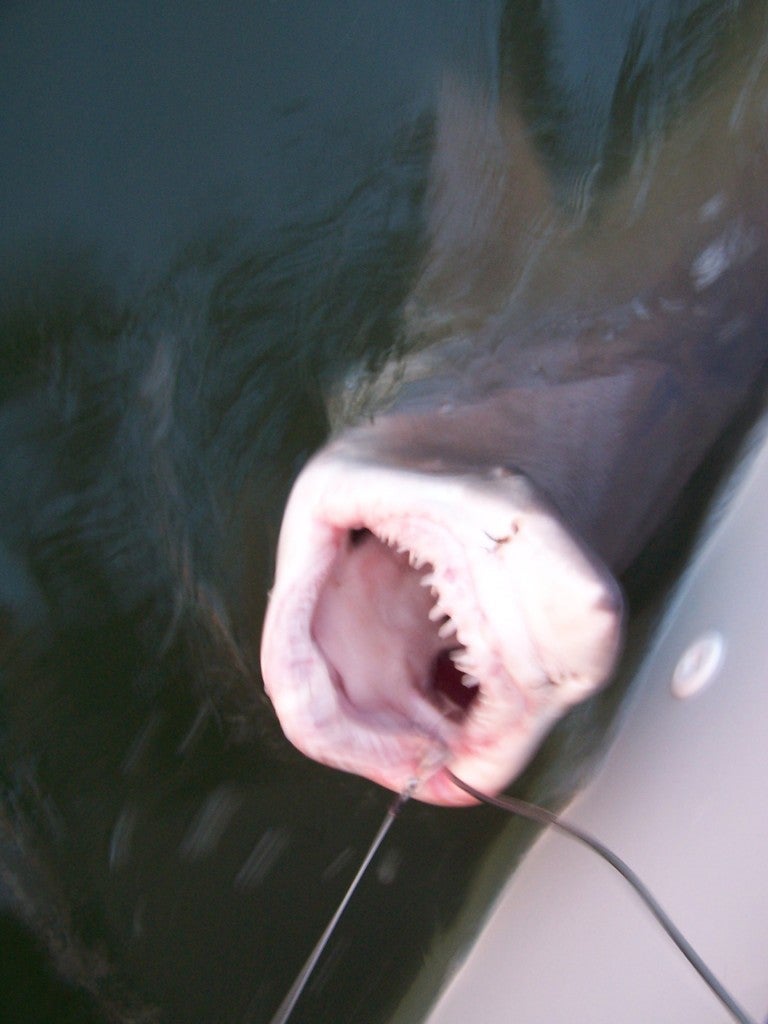Essential habitat requirements and site fidelity of sandtiger sharks Carcharias taurus in Delaware Bay
Johnny Moore and Dr. Dewayne Fox – Department of Agriculture and Natural Resources, Delaware State University
Brad Wetherbee – Department of Biological Sciences, University of Rhode Island
Worldwide populations of the sandtiger shark (Carcharias taurus) have declined dramatically over the past several decades as a result of high rates of harvest in commercial and recreational fisheries. Populations along the US East coast may have decreased by as much as 80% over this time period and sandtiger sharks have been grouped among the “prohibited species” category in the NMFS FMP for Atlantic Tunas, Billfish and Sharks. Sandtiger sharks are of particular concern because they give birth to only two offspring every other year and thus have a reproductive output that rivals the lowest among any species of elasmobranch in the world. Despite this high level of protection, there is very little information upon which to base assessment of sandtiger shark stocks and for monitoring progress of stock recovery. Additionally, there is a paucity of information on basic aspects of the life history of sandbar sharks in US waters, including details of their migrations, seasonal use of large bays and essential habitat.

This study examines site fidelity, habitat requirements and movement patterns of sandtiger sharks in Delaware Bay. A total of 29 sandtiger sharks have been tagged to date with long-life acoustic transmitters and their movements during summer residence in Delaware Bay are being monitored by an array of receivers placed throughout the bay. Sandtiger sharks remained in Delaware Bay throughout the majority of the summer, spending considerable time in shallow, nearshore waters, but moved throughout the bay and occasionally left the bay. There are several locations within the bay, especially near the entrance of the bay, where small groups of sandtiger sharks aggregate.
 Home
Home Browse
Browse Close
Close Events
Events Maps
Maps Email
Email Brightspace
Brightspace eCampus
eCampus



